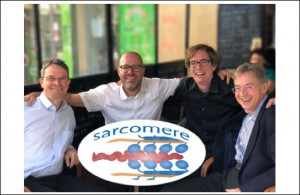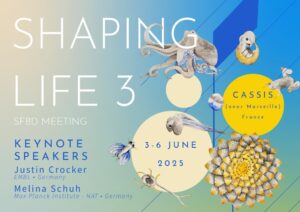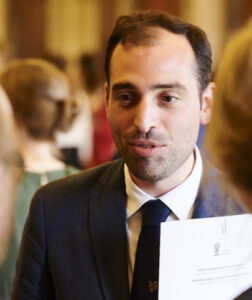 The European Research Council (ERC) awarded one of the rare ERC Synergy Grants to an international consortium of scientists, Frank Schnorrer (IBDM, Marseille), Stefan Raunser (Max Planck Institute of Molecular Physiology, Dortmund), Dirk Görlich (Max Planck Institute for Biophysical Chemistry, Göttingen) and Mathias Gautel (King’s College, London). Funds of €11 million during the next six years will enable the research teams to elucidate the molecular details of muscle formation and function in a joint collaboration. The partners in the consortium have already gained groundbreaking insights into the molecular processes of muscle development and function in recent years.
The European Research Council (ERC) awarded one of the rare ERC Synergy Grants to an international consortium of scientists, Frank Schnorrer (IBDM, Marseille), Stefan Raunser (Max Planck Institute of Molecular Physiology, Dortmund), Dirk Görlich (Max Planck Institute for Biophysical Chemistry, Göttingen) and Mathias Gautel (King’s College, London). Funds of €11 million during the next six years will enable the research teams to elucidate the molecular details of muscle formation and function in a joint collaboration. The partners in the consortium have already gained groundbreaking insights into the molecular processes of muscle development and function in recent years.
Muscles are composed of muscle fiber bundles with each fiber containing hundreds of long chains, the muscle fibrils. Their smallest repeating functional unit is the sarcomere. This power pack performs the actual muscle work: When the sarcomeres shorten, the muscle contracts. When the sarcomeres lengthen, the muscle extends. During muscle contraction, filamentous strands of the muscle proteins, actin and myosin, slide along each other.
Muscle contraction, however, is also based on the interaction of a plethora of additional proteins. This delicate architecture needs to be correctly set up during muscle development. If the components are misplaced or do not work together properly, severe muscle or heart diseases can develop.
New insights into the structure of muscles
 “Using electron microscopy, we have already been able to visualize some muscle building blocks in atomic detail, such as the protein complex of actin and myosin as the central element of the sarcomere. Our ultimate goal is to elucidate the three-dimensional structure of the sarcomere as a whole and gain insights into its formation, maintenance and function,“ explains Stefan Raunser, coordinator of the joint project.
“Using electron microscopy, we have already been able to visualize some muscle building blocks in atomic detail, such as the protein complex of actin and myosin as the central element of the sarcomere. Our ultimate goal is to elucidate the three-dimensional structure of the sarcomere as a whole and gain insights into its formation, maintenance and function,“ explains Stefan Raunser, coordinator of the joint project.
“Our muscles, both skeletal and heart, have to function perfectly for our entire lifespan and therefore must be regularly serviced. We do not yet know how this works exactly. Thus, we want to investigate and compare the composition and the structure of sarcomeres in young and aged muscles,“ Frank Schnorrer and Dirk Görlich refer to one of the goals of this large-scale project.
Combining forces to uncover the nanostructure of sarcomeres
This European consortium intends to use its unparalleled expertise and state-of-the-art technologies to address the fundamental questions of the project. Together, it pursues an innovative, interdisciplinary concept that combines quantitative proteomics and nanoantibody engineering (Görlich) with super-resolution light microscopy (Schnorrer, Gautel), electron cryo-tomography (Raunser), and biochemical as well as functional genetic analyses of sarcomere dynamics in Drosophila flies (Schnorrer), but also in zebrafish and mouse (Gautel).
“Each of us alone would not have been able to achieve what has now become possible through the interactions of our network. The awarding of Synergy Grants is a smart strategy by the European Research Council to enable the collaboration of leading teams that can complement each other’s research endeavors in a joint project,“ comments Mathias Gautel on the role of ERC Synergy Grants for research in Europe.
Coordinator Stefan Raunser predicts that the consortium’s expected research results will provide new insights into the structure of muscle cells at the molecular level and hopefully explain how a muscle cell can generate sarcomeres. This will ultimately contribute to a better understanding of muscle diseases and to the development of innovative agents to mitigate muscle disease and ageing.
About the ERC
The European Research Council, set up by the European Union in 2007, is the premier European funding organization for excellent frontier research. Every year, it selects and funds the most outstanding, creative researchers of any nationality and age to run projects based in Europe. The ERC has three grant schemes for individual principal investigators – Starting Grants, Consolidator Grants, and Advanced Grants – and Synergy Grants for small groups of excellent research teams with up to €14 million in funding for up to six years.
In the 2019 competition for these grants, 37 consortia were selected for funding. A total worth of €363 million, these special grants will enable groups of two to four top researchers to bring together complementary skills, knowledge, and resources in one research project. The recipients will be able to tackle some of the most complex research problems, often spanning multiple scientific disciplines. This funding is part of the EU’s research and innovation program, Horizon 2020.



